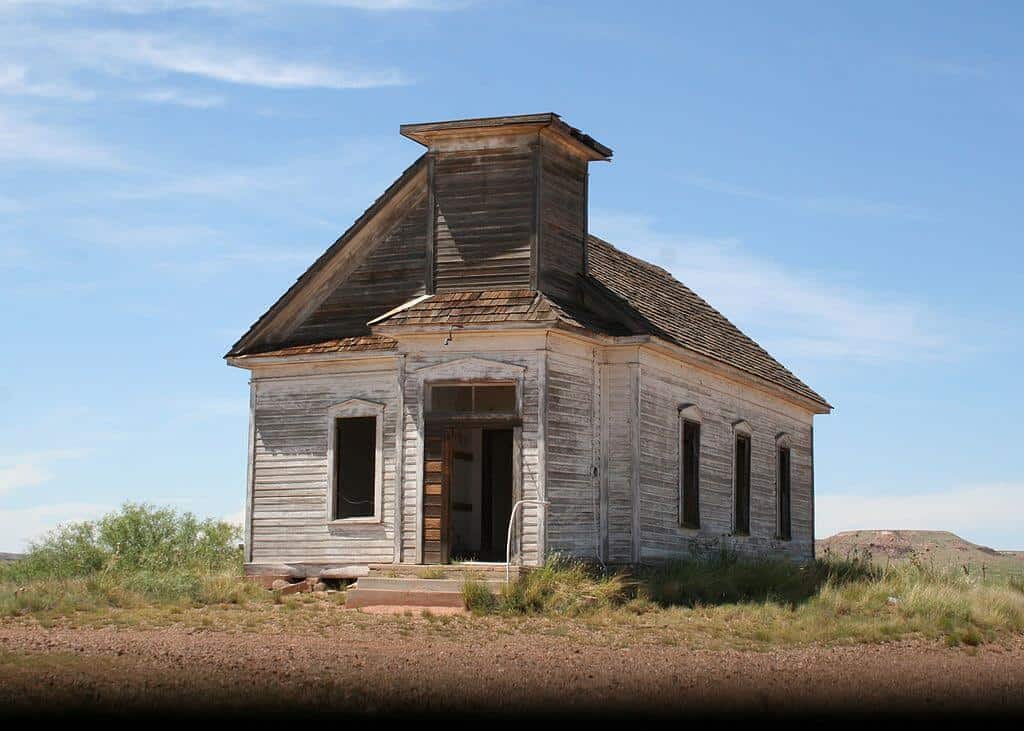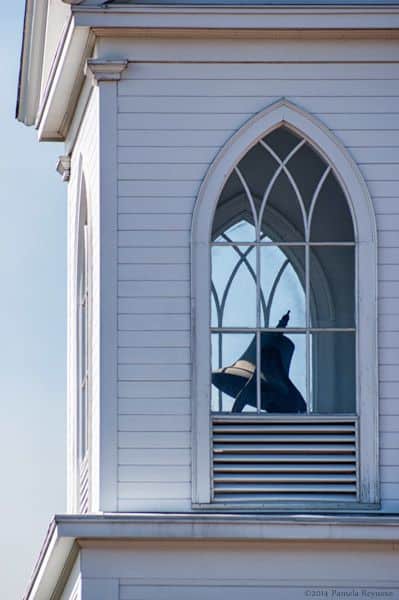The contemporary Christian rock group Petra dedicated an entire album to the theme of spiritual warfare when they released This Means War in 1987. With a title track that channeled John Milton’s Paradise Lost in its depiction of Satan’s expulsion from heaven and a song that urged spiritual warriors to “Get on Your Knees and Fight Like a Man,” Petra united their driving guitar riffs with an appeal to take the fight to spiritual enemies. Those spiritual enemies were the sinister trifecta of the world, the flesh, and the devil himself. Victory in this conflict was already achieved through the crucifixion and resurrection of Jesus Christ. Bob Hartman, Petra’s lead guitarist and lyricist, portrayed Jesus as the Julius Caesar of the universe in the anthem “He Came, He Saw, He Conquered.” Hartman wrote:
He came, he saw, he conquered death and hell
He came, he saw, he is alive and well
He was, he is, and only he forgives, he lives![1]
The collection concluded with “All the King’s Horses and All the King’s Men,” a description of the apocalyptic victory of Christ over the armies of evil lifted directly from the writings of popular dispensational premillennial popularizers.

Contemporary Christian music emerged in the late sixties and early seventies as the musical expression of the “Jesus People” movement. The Jesus People were disaffected products of the counter-culture who abandoned a life of sex, drugs, and rock and roll to “get high on Jesus.” Ministers like Chuck Smith of Calvary Chapel in Los Angeles, California and Lonnie Frisby adopted unconventional evangelistic techniques, including contemporary music with Christian lyrics to communicate the gospel in a language young people could embrace.[2]
The Jesus Movement was characterized by the blending of Christian theology and counter-culture ideals. This synthesis was aided by the fact that many Christian ethical ideals such as compassion for the poor, challenging corrupt power structures, and advocating world peace were compatible with counter-culture social goals. One prominent difference between the Christian treatment of these ideals and their presentation in counter-culture rock and folk music was the expectation that none of the great social problems of the day would be resolved until Jesus Christ returned. Dispensational Premillennialism, an interpretive approach to the apocalyptic sections of the Bible that had originated in Ireland at the beginning of the nineteenth century, exerted a powerful influence over young evangelical Christians in the early seventies due to the writings of prophecy popularizers like Hal Lindsey. Lindsey’s The Late Great Planet Earth, published with coauthor C. C. Carlson in 1970, provided a popular treatment of dispensational prophecy in grassroots language. The book was dubbed the “No. 1 nonfiction bestseller of the decade” by the New York Times.[3] Because of the presence of both dispensational prophecy and counter-culture social/political activism in the DNA of the Jesus Movement, Christian music during the era tended to emphasize either gentle activism to address the needs of a war-torn hurting world or patient endurance through these harsh social circumstances until Christ returned to inaugurate his kingdom on earth.
Larry Norman has often been credited with pioneering contemporary Christian music with the release of Upon This Rock in 1969. Norman’s first album demonstrated the combination of counter-culture communal utopianism and Christian theology typical of early contemporary Christian music. The track “I Wish We’d All Been Ready” united apocalyptic imagery with longings for world peace that foreshadowed John Lennon’s Imagine (1971). Unlike Lennon’s conception of a utopian order where there is no heaven or hell, Norman channels the dispensationalist hope that social upheaval indicated the immanence of heaven on earth in the form of Christ’s return. Experiencing this heavenly utopia was dependent on coming to know Christ as personal Savior. Norman lamented the fate of those who would be “left behind” because of their refusal to believe. After relating the desperate state of the world, Norman’s haunting refrain broke the terrible news that “There’s no time to change your mind, the Son has come and you’ve been left behind.”[4]
Petra, founded in 1972 by Bob Hartman and John DeGroff, produced music characterized by similar devotional themes and concern for the salvation of souls over social or political activism. Change in the world was the product of change in the individual heart, as in Hartman’s controversially titled 1981 song “Killing My Old Man,” a metaphorical allusion to Paul’s admonition to the Romans in chapter 6, verse 11, to consider themselves dead to sin and alive to God. Early Petra endorsed the same dispensational premillennial theology expressed by later incarnations of the group, but tended to be less militant in their expression of these beliefs. A typical example was “Grave Robber,” a song which celebrated the catching up of Christian saints to heaven popularly known as the “rapture” in evangelical circles. The focus of the song was not on apocalyptic warfare, but rather the reunion of Christians with each other and Christ in heaven. Quoting the Apostle Paul’s first letter to the Corinthians, the band mocks death itself by asking, “Where is the sting, tell me where is the prize, when the grave robber comes like a thief in the night . . . And death finally dies.”[5]
A noticeable shift began to occur in the lyrical stylings of Contemporary Christian artists as the seventies gave way to the eighties and counter-culture Jesus Freaks morphed into conservative promoters of an emerging American evangelical subculture. Conservative evangelicals were feeling increasingly alienated from mainstream American culture due to the social changes and identity politics of the sixties and seventies. Specifically, developments such as the Supreme Court decisions in the early sixties concerning religious practices in public schools, the liberalization of abortion policy after the Roe v. Wade decision of 1973, and disagreements with the Carter administration concerning family policy fueled conservative evangelical’s sense of living under cultural siege. The bicentennial of the American founding in 1976 spurred a popular evangelical historiography that characterized the American past as an age of virtuous Christian influence in contrast to a modern America that evangelicals believed to be in swift decline. The same dispensational prophecy beliefs that motivated evangelicals to evangelism and social ministry in the late sixties and seventies also provided guidance for understanding and resisting an increasingly hostile culture. Dispensationalist popularizers interpreted the Biblical books of Revelation and Daniel as foretelling the increasing growth of evil in the world and the ultimate rise of Antichrist before the return of Christ. As Historian Paul Boyer has illustrated in his study When Time Shall Be No More: Prophecy Belief in Modern American Culture, the general outlines of dispensational prophecy belief have remained somewhat consistent while the specific application of those themes has been conveniently malleable through the centuries.[6] The narrative of American cultural decline fit the overall dispensational outline while the flexibility of specific application within the dispensational belief system meant that it could be utilized to brand almost any cultural changes that challenged evangelical concerns as illustrative of an interconnected web of encroaching evil. This perception of encroaching evil within the system produced by the threefold spiritual enemies of the world, the flesh, and the devil was a persistent theme in the writing, preaching, and teaching of conservative evangelical leaders who shaped the popular evangelical subculture of the eighties and nineties. It also became a central theme in the music of the Christian artists whose Biblical interpretations and worldviews were shaped by these evangelical leaders. Spiritual warfare themes found fertile soil particularly in the music of Christian rock and heavy metal groups who were seeking to take the gospel to American youth. Many possible reasons exist for this natural synthesis of Christian rock and metal with spiritual warfare themes in the eighties and nineties.
Christian rock musicians needed themes that were appropriate for the driving rhythms of rock and metal music. Secular rock tended to advocate rebellion, resistance to authority, and nonconformity. Spiritual warfare themes channeled youthful tendencies towards rebellion into a different sort of nonconformity. Through Christian rock and metal music Christian youth were encouraged to rebel against conformity, but the system they were resisting was the spiritually corrupt world of mainstream culture. Petra’s 1985 album Beat the System featured a young man standing before a wall of television screens. A light is emanating from the TV sets as the man shields his eyes. The title track includes the lines “Being swept downstream, going against the flow seems like such a dream.” In the end, the band proscribes that Christian youth “face the heat, dare to beat the system.”[7] Former nightclub singer Carman Licciardello, whose varied musical style defied any standard categorization, adopted aggressive guitar riffs in his song “God’s Got An Army” from the Revival in the Land (1989) album. Carman proclaimed that “God’s got an army, not afraid to fight, soldiers of the cross and children of the light.” This Christian army was composed of “warriors of righteousness with healing in their hands.”[8] Christian youth, while still being nonconformists in relation to mainstream culture, belonged in a spiritual army with passion and purpose.
Militaristic language like that incorporated by Carman in “God’s Got an Army” would have been considered in poor taste even in a symbolic spiritual sense during the sixties and seventies era of social unrest and the Vietnam War. In the Reagan eighties, renewed cold war engagement and a culture that celebrated peace through military strength provided a congenial context for spiritual warfare themes. In a world of Rambo, Chuck Norris, and G. I. Joe, Carman’s depiction of the struggle between God and Satan as a cosmic boxing match in “The Champion” seemed to fit the tenor of the times well.[9] Stryper, easily the Christian rock band that enjoyed the most mainstream success in the eighties, titled their second album Soldiers Under Command. Soldiers Under Command was released in 1985 and featured the band clad in bumble bee patterned spandex leaning on a military style vehicle shaded in similar tones.[10] Eddie DeGarmo and Dana Key featured the triumphalist theme of military victory as an inspiration to overcome daily spiritual struggles in their 1985 song “Destined to Win,” part of a curious album entitled Captian Sozo and the Charge of the Light Brigade. As a commentary on eighties spiritual warfare theology, Captain Sozo was akin to a sanctified musical version of Peter Seller’s classic film Dr. Strangelove (1964) except that none of the irony in Sozo was intentional. The album contained other songs with spiritual warfare lyrics including “Charge of the Light Brigade” and “Rise Up.” “Destined to Win” reminded evangelical Christians that “there is a king who leads his people to victory.”[11]
DeGarmo and Key had already created cultural waves the year before with the video for their song “Six, Six, Six” from their 1984 release Communication. “Six, Six, Six” illustrates another way in which spiritual warfare themes in Christian music connected with eighties culture. Interest in the supernatural and Satanism, which had been rising in the sixties and seventies, reached a fever pitch by the mid-eighties. Slasher films had proliferated since John Carpenter’s Halloween frightened audiences in 1978. Stories of tainted Halloween candy and satanic ritual murders frightened people across America. Geraldo Rivera devoted a televised primetime special to investigating Satanism in America.[12] Oklahoma City teen Sean Sellers seemed to confirm the fears of many Americans when he insisted that he murdered his parents in 1986 under the influence of demonic possession and after reading Anton Levay’s Satanic Bible.[13]
Christian artists like DeGarmo and Key portrayed the specter of Satanic power with frightening imagery. “Six, Six, Six,” based on the mysterious number of the beast in Revelation 12, featured a sinister Antichrist figure tempting a young person to compromise his values by joining him in his evil plans. When the youth asks his tormentor to explain himself, the figure, “smiled and told me Six, Six, Six.” The video of the song featured a fiery end for the evil antagonist so graphic that it was refused an airing by MTV until the scene was edited.[14]
Christian musicians were possibly motivated in part to emphasize themes of spiritual warfare as a means of distinguishing themselves and their ministries as much as possible from negative associations with the artists they were imitating. Contemporary Christian artists were often under fire in the eighties from critics within the fold such as Louisiana charismatic Pastor Jimmy Swaggart, who criticized Christian rock musicians for compromising by using musical styles he believed to be inherently evil. Swaggart denounced Christian rock as the “new pornography,” which was ironic given his later fondness for the old pornography.[15] Even a contemporary artist as tame as Amy Grant had to be careful about being associated with the powers of darkness. Grant’s managers sued Marvel Comics in 1990 over what appeared to be an image from her greatest hits album, The Collection, placed in the background of the cover of Dr. Strange: Sorcerer Supreme issue #15. Marvel insisted that they had not used Grant’s image, but Grant’s legal team insisted that the association of Grant with a comic that emphasized sorcery might stigmatize Grant in the Christian community. The suit was settled out of court, and the settlement was sealed by a U. S. District Court in Tennessee. Attempts by Grant’s managers to stop the circulation of the comic only resulted in increased demand raising the price from the usual $1.50 to $7.00.[16]
If Grant had reason to be concerned about being associated with Satanic imagery, her colleagues who looked and sounded much more like Motley Crue or Black Sabbath needed to be sure that they flexed their spiritual warrior muscles. While Motley Crue decided to “Shout at the Devil” clad in make-up and pentagrams, the Christian band Stryper proclaimed To Hell with the Devil in their 1986 album and title song.[17]
General admonitions to engage in spiritual warfare became more overtly political and concrete as the eighties gave way to the nineties. Petra and Carman joined forces to produce a song and video in 1992 entitled “Our Turn Now.” The song began with the prayer often said by schoolchildren in public schools before the Engle v. Vitale decision overturned such devotional practices in public education. The video produced to accompany the song featured Carman and the members of Petra marching through a school with a cadre of Christian youth prepared to take their schools back for Christ. The thundering lyrics proclaimed, “World, you had your turn at bat, Now stand back and see, That It’s Our Turn Now, Something’s Gonna Change, Gonna Bind the Devil at Every Hand, By the Power of Jesus’ Name.”[18] The song reflected the influence of a Religious Right that had developed to the extent by the early nineties that subtlety or vagueness was no longer necessary in launching appeals to Christian youth. “Our Turn Now” openly named “free love, gay rights, no absolutes, abortion on demand” as the moral symptoms of Satanic influence. While Petra’s focus on spiritual warfare waned by the mid-nineties, Carman continued to pursue the more politicized versions of warfare with institutional powers of darkness in songs like “America Again” from his 1993 album The Standard.[19]
Contemporary Christian musicians often embraced spiritual warfare themes in the eighties and nineties in contrast to the more passive and social stances their predecessors had adopted in the sixties and seventies. Their embrace of the language of spiritual warfare connected with some trends in American mainstream culture in the eighties even as they vigorously proclaimed their marginalized outsider status within mainstream culture. This shift to a posture of spiritual warfare preparedness morphed into a more open politicized rejection of mainstream culture in the nineties and finally to a return to the more basic focus on evangelicalism and social themes in the early 2000’s through the dominance of praise and worship music. God’s army, it seemed, had returned to its original mission.
This essay is from our Anastasis Series where we resurrect articles from the past that are either still relevant today or can be easily updated. This piece was first published on November 11, 2021, and has been lightly edited and updated.
[1] Petra, This Means War, StarSong Records, 1987.
[2] Larry Eskridge, God’s Forever Family: The Jesus People Movement in America. Oxford, UK: Oxford University Press, 2013, 1-50.
[3] Hal Lindsey and C. C. Carlson, The Late Great Planet Earth, Grand Rapides, MI: Zondervan, 1970.
[4] Larry Norman, “I Wish We’d All Been Ready,” Upon This Rock, Capitol Records, 1969.
[5]Bob Hartman, “Grave Robber,” Never Say Die, Star Song, 1981.
[6] Paul Boyer, When Time Shall Be No More: Prophecy Belief in Modern American Culture, Cambridge, MA: Harvard University Press, 1994, 46-80.
[7] Petra, Beat the System, Star Song, 1985.
[8] Carman, Revival in the Land, Dayspring, 1989.
[9] Carman, The Champion, Dayspring, 1985.
[10] Stryper, Soldiers Under Command, Enigma, 1985.
[11] DeGarmo and Key, Captain Sozo and the Charge of the Light Brigade, Power Discs, 1985.
[12] Philip Jenkins, Decade of Nightmares: The End of the Sixties and the Making of Eighties America, Oxford, UK: Oxford University Press, 2006.
[13] Michelle Green, “A Boy’s Love of Satan Ends in Murder, a Death Sentence-and Grisly Memories,” People, Vol. 26, No. 21, December 1, 1986,
[14] DeGarmo and Key, “Six, Six, Six,” Communication, Power Discs, 1984.
[15] Jason Bivens, Religion of Fear: The Politics of Horror in Conservative Evangelicalism, Oxford, UK: Oxford University Press, 2008.
[16] “Amy Grant Meets Dr. Strange,” Christianity Today, Vol. 4, Issue 9, June 18, 1990, p. 68.
[17] Stryper, To Hell With the Devil, Enigma Records, 1986.
[18] Carman, “It’s Our Turn Now,” Addicted to Jesus, Sparrow, 1991.
[19]Carman, “American Again,” The Standard, Sparrow, 1993.






